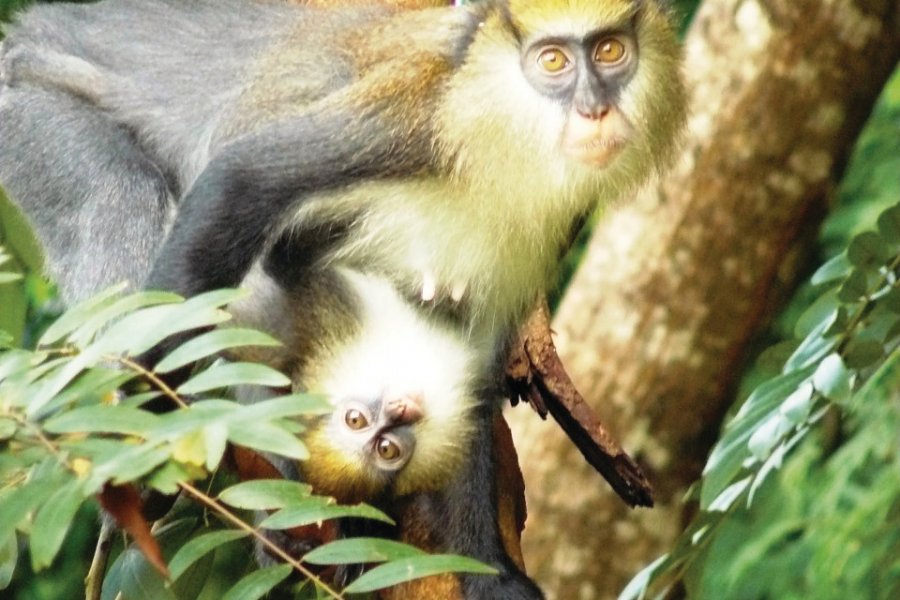Travel Guide Man
Find an accommodation
Advertising
The mountainous west of Côte d'Ivoire, close to the Liberian and Guinean borders, differs enormously from the rest of the country, with its own climate and relief. This territory is covered by a thick mantle of forest, whose durability is ensured by an almost permanent rainy season (the dry season lasts from December to January). It is dotted with forested mountains, some of which are over a thousand meters high (Mount Nimba, Mount Tonkoui), and imposing granite peaks polished by erosion (Dent de Man). This region, with its reputation for impenetrability and known as the presumed homeland of the terrifyingly powerful "little red men", considered to be the ancestors of the Dan (the name Dan derives from dinn, the term used to designate the famous little red men), nurtures fantasies of fierce tribes lurking in the shadows of forests inhabited by fearsome genies.The Dan. The bulk of the population is made up of the two main ethnic groups, the Dan (or Yacoubas) and the Wês. The Dan belong to the Southern Mandé family, while the generic term Wê encompasses the two main Krou sub-groups, the Guérés and the Wobés. The region was settled by successive waves of invasions: the Yacoubas, ancestors of Man's present-day inhabitants, are thought to have come from Guinea (more precisely from N'Zérékoré, in the south-east of the country), before the onslaught of the Mandés Nord (Malinkés) forced them to take refuge in the mountains and forests, the Diomandés (ancestors of the Maous, the southernmost fraction of the Malinkés) finally subdued them and imposed their military hegemony over all the ethnic groups in the region, while in terms of culture and language, the Dan continued to dominate. This region is a condensation of mystery and sacredness, of impenetrable nature arousing fear and respect in equal measure, of enchanting landscapes (waterfalls, mountains and dense misty forests...) and of rich cultural traditions that always make a strong impression on visitors. Particularly impressive are the liana bridges, dancer-stilt-walkers, knife jugglers and dan masks, world-renowned for the purity of their lines and particularly prized by collectors. The Great West of Côte d'Ivoire was long considered one of the country's tourist gems. In the 1970s, the capital of the 18 mountains, with its pretty, well laid-out town center, was nicknamed Yacoubadougou Paris ("the Yacoubas village that looks like Paris")... Unfortunately, the region suffered enormously from the political crisis of the 2000s, and Man, like Duékoué, Danané and Guiglo, experienced serious violence. Many of the town's buildings still bear the scars of the war, and for years, the sad shell of the BCEAO branch, ransacked, looted and left to rot for many years, was a grim reminder of those troubled times. Today, Man presents a face under reconstruction.
What to visit Man?
Advertising
Weather at the moment
Advertising
Organize your trip with our partners Man
Transportation
Book your plane tickets
Car Rental
Boat rental
Accommodation & stays
Find a hotel
Holiday rental
Find your campsite
Tailor-made trip
Immersion travel
Services / On site
Activities & visits
Find a doctor















